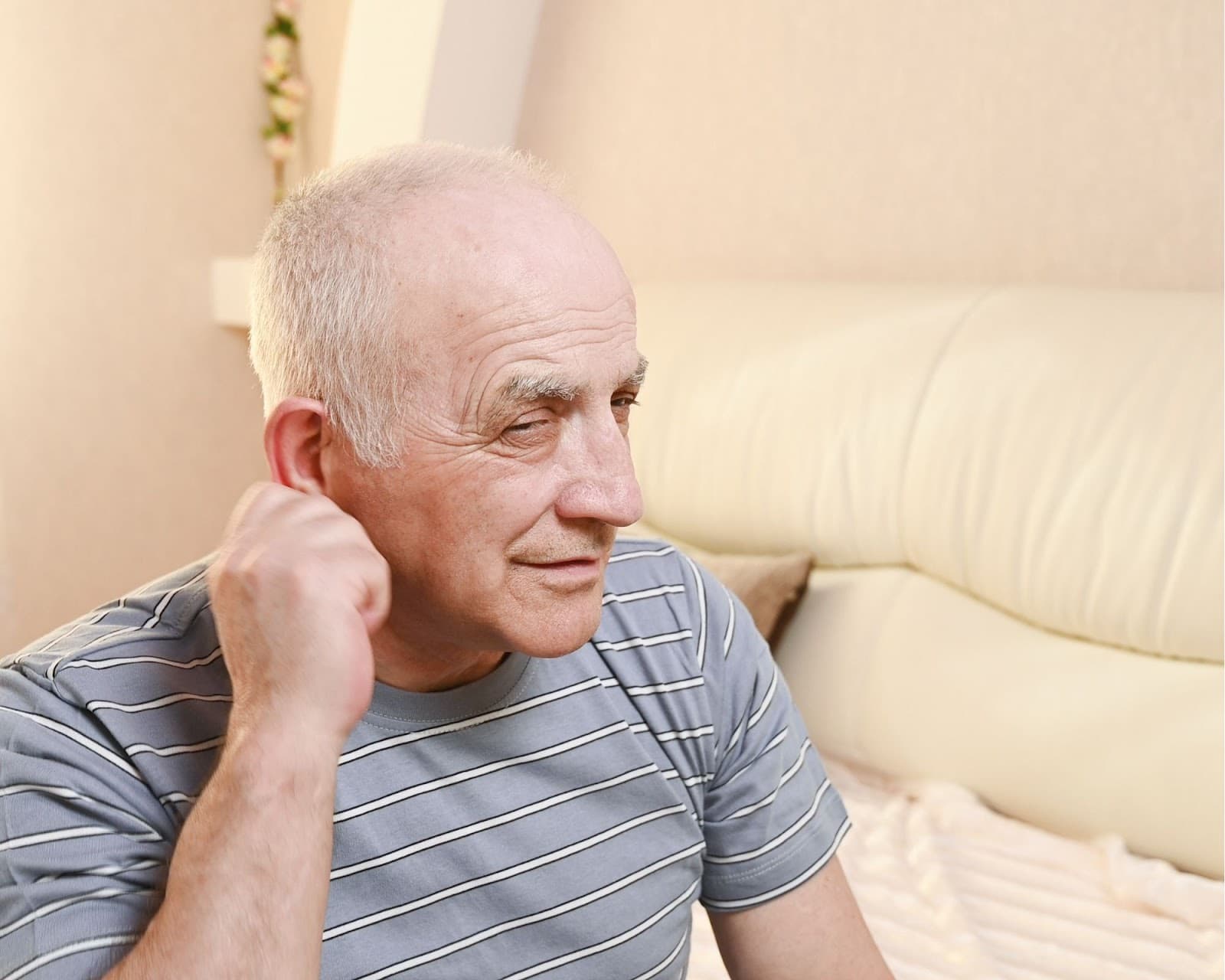Everyone makes earwax, so anyone can develop earwax buildup. According to estimates, it affects about 10% of children and 5% healthy adults. Many factors can contribute to ear wax production, such as the shape of the ear canal, the ratio of sebaceous to ceruminous glands, and even age and lifestyle.
To protect the ears, the body produces earwax, also called cerumen. In addition to its lubricating properties, cerumen is an antibacterial agent. If too much builds up and is left untreated, it can cause hearing loss, irritation, ringing in the ears, dizziness, and other problems.
Inside the ear, earwax is produced only in the outer portion of the canal. Combined with dead skin cells and hair, earwax is formed from two different glands and dead skin cells. During the growth process, the older earwax is moved from the inside to the outside of the ear canal by jaw movements, such as chewing. It flakes off outside the ear when it reaches the surface.
What Causes Excessive Earwax?
When there is clear evidence that something is wrong with your ear canal because of excessive earwax, it is termed impacted. Earwax can become excessive when your body makes it faster than it can be removed. This is usually due to:
- An infectious disease
- A bony blockage
- Swimmers ear
- Contact with headphones or hearing aids
Certain factors make it more likely to occur in certain people, such as those who wear hearing aids, earbuds, or earplugs, those with ear hairs or those with certain skin conditions, and those who put cotton swabs in their ears or other items into their ears.
However, some people might not ever have to clean ears. Ears are self-cleaning. People often get blocked ears and earwax buildup from trying to clean their ears with cotton swabs and bobby pins. By doing so, earwax is pushed farther into your ears, and you may damage your ears.
What Problems Can Earwax Cause?
Symptoms of earwax blockage may become worse if excessive earwax is not treated. Hearing loss, ear irritation, etc., may accompany excessive earwax. If earwax builds up in the ear, doctors may have difficulty diagnosing potential problems.
In addition to being uncomfortable, earwax buildup can cause temporary hearing loss. Also, earaches and tinnitus- a feeling of fullness in the ear, and a buzzing or ringing sound–are symptoms of excessive earwax.
Infections can also be caused by earwax buildup. The most common symptoms of infection are severe or persistent pain within the eardrum, drainage from the ear, hearing loss, dizziness, fever, coughing, and a foul smell coming from your ear.
Healthy earwax has many colors, and sometimes, color actually means something. The first thing you need to determine is if your earwax is wet or dry.
A wide variety of colors can be found in wet earwax, including light yellow, honey-colored, and orange-brown. Dry earwax is likely gray or whitish in color and flaky in texture.
Darker colored earwax, regardless of its age, is generally older. More dust is likely to be present in this material because it has been exposed to more air.
If you find that your earwax has been caked on your pillow after you sleep, or if it contains white or green pus, you should contact your healthcare provider. As well as seeing blood, if your earwax appears quite black, you should contact your healthcare provider.
Earwax is produced by children. Cleaning their ears shouldn’t be a problem unless they produce too much. Washcloths should only be used to remove dirt. Don’t worry about earwax buildup unless your child shows signs that it is bothering him or her. A child may pull on their ears, put things in their ears, or have difficulty hearing. Consult your healthcare provider if any of these symptoms appear
How do you remove impacted earwax?
Many methods are available for removing earwax; some of these methods are easy to perform at home. For earwax removal at home, it is recommended to avoid using items such as ear candling, q-tips, or bobby pins.
Removing built-up or impacted earwax at home with several remedies is possible, but some of them are risky. Attempting to remove earwax at home should be discussed with a medical professional. An eardrum rupture due to impacted/hardened wax or abrasion of the ear canal is potentially painful if not professionally removed.
Objects inserted into the ear shouldn’t be used to remove earwax. It is best to use cotton swabs only on the outside of your ears.
For home removal of earwax, add a few drops of mineral oil, baby oil, carbamide peroxide, hydrogen peroxide or glycerin into your ear to soften the wax. Once the earwax has been softened, it may drain without further assistance.
It is easier to remove the softened wax by irrigation if the earwax does not drain on its own. Using an over-the-counter kit or your doctor’s office can be done. You should always use an ear irrigation kit specifically made for this purpose and follow the instructions carefully. If your ear has been injured or you have undergone a medical procedure, never irrigate your ear.
Excessive Earwax in Children
Earwax is produced by children too. Cleaning their ears shouldn’t be a problem unless they have too much. Washcloths should only be used to remove dirt. Don’t worry about earwax buildup unless your child says it is bothering them. A child may pull on their ears, put things in their ears, or have difficulty hearing. Consult your healthcare provider if any of these symptoms appear.
The Bottom Line
If you have persistent excessive earwax problems, make sure you seek professional help. If you live in the Las Vegas area, consider using Hearing Associates of Las Vegas for your hearing needs.




Leave a Reply